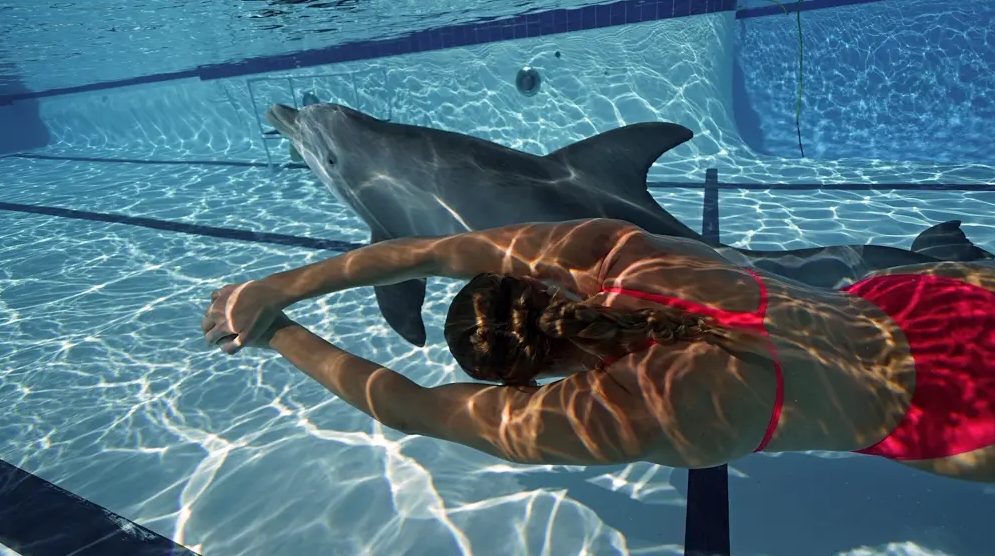
The American aquarium SeaWorld said it had ethical issues with creatures being trained to perform several times a day. Some zoos try to create an environment close to their habitat by providing a wide outdoor space. On the other hand, aquariums have been problematic because it is difficult to reproduce the vast ocean in reality.
If you look at the video filmed in 1999, that is, 20 years ago, you can examine whether the idea at that time can still be a solution. The stage in the video is Living Seas located in Disney World. It is the robot dolphin that swims in the tank in front of the audience and interacts with the diver. In fact, on a privately owned island called Castaway Cay in the Bahamas, an experience of interacting with robot dolphins was provided. Participants recall that they were able to have a realistic experience with the robot.
However, 20 years later, a robot dolphin that swims in a very realistic way has been newly designed. It was created by a special effects engineer at Edge Innovations based in San Francisco and a former creative director at Walt Disney.
The newly born robot dolphin weighs 270 kg and can operate on batteries for 10 hours, and it is said that it can be used for 10 years in a salt water environment. The shape and movement were referenced to the dolphin, and the skeleton and muscle structure similar to the real thing was reproduced under the hull. It is said that it was designed to accurately distribute the weight to show the movement realistically.
It just moves autonomously with a camera or sensor, but it has no intelligence. Therefore, it is said that it is basically a state in which a nearby operator controls a doll that can respond to commands or conversations in real time.
Will we be able to meet these upgraded robot dolphins someday? It has not yet been introduced to Disney-run theme parks and resorts. However, as part of an effort to contain the spread of COVID-19, it is said that it is scheduled to be developed and tested in a new aquarium in China, where the trade of wild animals is banned.
Now that these realistic robot dolphins are designed, it may be necessary to discuss whether real dolphins are needed. Ethical concerns previously raised are eliminated and resources required for food and veterinary services are not required.


